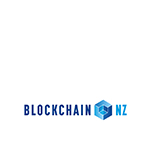NFTs (non-fungible tokens) and their varying and increasingly exciting uses are taking the blockchain world by storm. These little decentralised hashes have quite literally unlimited potential to shape everything from event ticketing to the development of web 3.0 and the metaverse. Let’s dig in:
What is an NFT?
NFTs are unique digital tokens used to store, create and exchange exclusive things on a blockchain. They are valuable because they contain the rights to something, or the information about something, in the digital or physical world that is valuable e.g. they prove that you own an expensive piece of digital art. You can think of them as acting a bit like a decentralised certificate of authentic ownership.
Storing NFTs on a blockchain means that this certificate of ownership is decentralised. In other words, there is no central authority or company that is in control who could theoretically revoke your ownership if they so choose. This is the special property of blockchain: we can have verifiable digital value stored in a way where there isn’t a central entity in control of it.
How does NFT ownership work if people can just copy them?
So what’s the point in an NFT if you can just screenshot the unique piece of digital art? In short blockchain’s make sure we can all tell what’s a screenshot and what’s the original.
Blockchains provide the ability to verify and authenticate things in the digital world without the need for a third party. This means that everyone on the blockchain will be able to tell whether someone has simply copied a Fluf or is wielding the genuine article.
We can think about this in relation to non-digital art. You have always been able to buy a copy of the Mona Lisa or just photograph it. But even if you get that copy nicely framed on your wall — it’s not actually the Mona Lisa — and many art authorities and experts will happily attest to that if you ever seriously suggest you own the real deal.
This is the same on the blockchain, but we don’t need the art experts to tell us – anyone who chooses to can just check the decentralised record.
What’s exciting about NFTs?
The depth and breadth of NFTs functionality is breathtaking and facilitating the development of technologies in multiple exciting areas.
As a digital attribution of ownership recorded on the blockchain NFTs can be applied to anything unique, digital or non-digital. So yes collectable cards and pictures, but also: a VIP membership, a hotel room key, car registrations, your concert ticket, identity documents, certifications, even your house. By putting these records of ownership on the blockchain, instead of a traditional analogue system, you ensure that it is both a verified transaction and that it can never be altered. Even if the ownership is later transferred, the records of previous ownership will always exist on the decentralised ledger.
Once assets are on the blockchain in the form of NFTs, assets can interact in the realm of programmable money. This opens up another world of use cases and secure streams of revenue. In fact, we predict that the biggest use cases will be in the finance world. A lot of the financial world runs on non-fungible instruments, for example, a bond has a unique maturity date, amount and interest rate. Your mortgage is non-fungible, as is the house itself and any land. All of these instruments which currently exist in the financial world can now be put into the digital sphere and connected to the world of smart money.
What’s next for NFTs?
The real-world use cases for NFTs are just starting to be developed with cool projects in digital identity, ticketing and as charity donation tools. But if we are honest there is one particular NFT usage that has us super excited.
The Metaverse and web 3.0!
These are big subjects and articles in their own right, but to give you a brief overview: NFTs offer a decentralised ownership protocol that allows for a truely decentralised internet experience. The Metaverse is the natural UX of a multi-blockchain spanning internet experience (otherwise known as web 3.0) and NFTs allow easy movement of digital assets through this new experience. With NFTs, users can move provably owned items through different apps, games and online experiences seamlessly, without requiring third-party verification. Watch this space!!
Looking to learn some more? We have a few resources to help out:
About the Author
Liz Izmailova is the Marketing Manager at CENNZnet, Executive Council member at BlockchainNZ, and expert on all things NFTs. You can find her on Twitter and LinkedIn.






